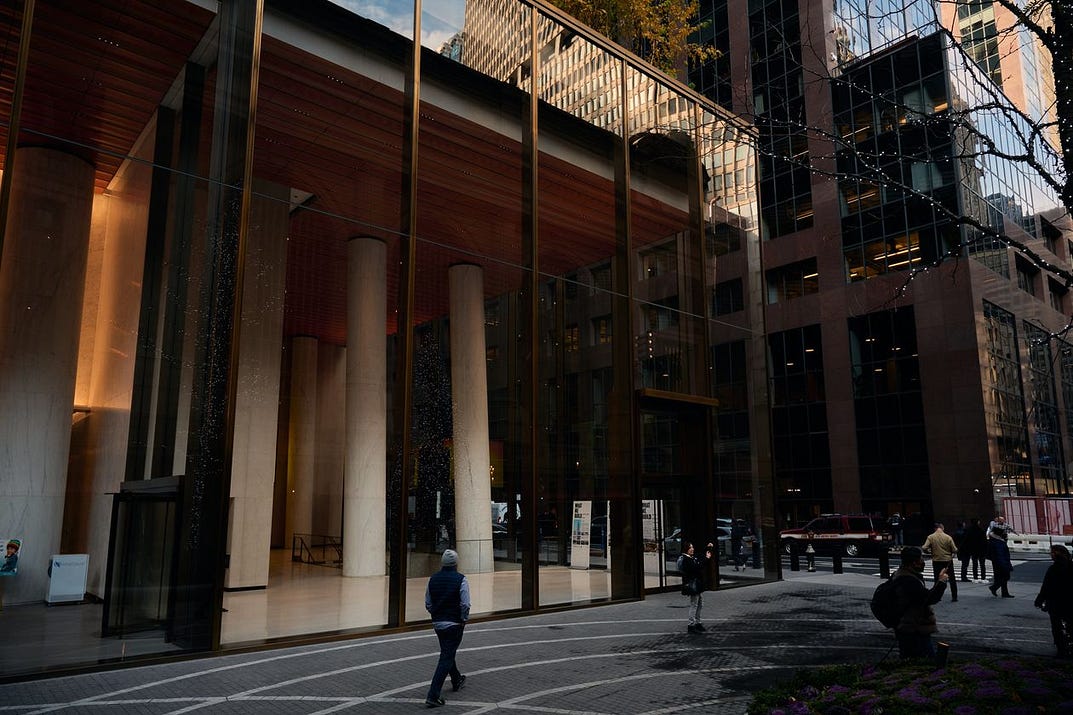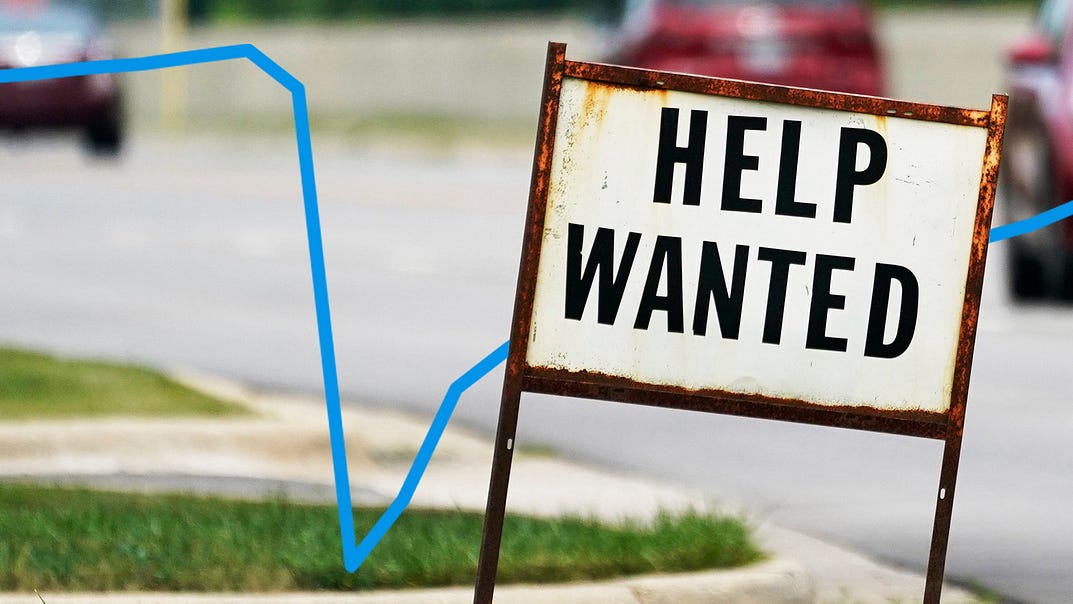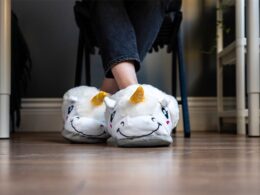Workplace stress is rampant and resignations have risen; employers are trying four-day workweeks, mandatory vacation days and other new ways of working
Wall Street Journal
By Te-Ping Chen and Ray A. Smith
Dec. 21, 2021
In the first 10 months of this year, America’s workers handed in nearly 39 million resignations, the highest number since tracking began in 2000.
Some want better jobs. Others, a better work-life balance. Still others want a complete break from the corporate grind. Almost two years into the pandemic that left millions doing their jobs from home, many Americans are rethinking their relationship with work.
Companies are struggling to stop employees from leaving and to boost morale. Some are trying mandatory companywide vacation days and blackout hours when meetings are banned. Executives are experimenting with new ways of working, including four-day workweeks and asynchronous schedules that allow people to set their own hours.
Employers say burnout, long an issue for American workers and exacerbated by the pandemic, is a prime cause. A September survey by think tank the Conference Board found that more than three-quarters of 1,800 U.S. workers cited concerns such as stress and burnout as big challenges to well-being at work, up from 55% six months earlier. Half said workload-related pressure was harming their mental health.
Tom Larrow, a 45-year-old information-technology manager for a financial-services company in Brunswick, Ohio, spent more than a year juggling work while helping his two young sons attend school online. He lost his mother-in-law to Covid-19. His nerves, he said, were frayed.
In September, he said, he had a panic attack as he tried to give his diabetic son insulin and couldn’t figure out the dosage. “I could not, in my head, divide 50 by 25,” he recalled. “I had to pull out a calculator and do that very, very basic math because my brain was so fried.”
Mr. Larrow’s employer has provided sessions on stress management, he said, which included recommendations to take five-minute breaks and meditate.
Chronic overwork already was rampant before the pandemic, said Alastair Simpson, vice president of design at software company Dropbox Inc. DBX -0.36% “We equated busy with good, or a badge of honor,” he said.
Over the past two decades, the length of the average American workday has increased by 1.4 hours, according to polling by Gallup Inc. For millions of Americans, as commutes disappeared and schedules grew more irregular, the pandemic lengthened days still further. In a survey this year, 16% of U.S. workers said they put in more than 60 hours a week, up from 12% in 2011.

In a survey this year, 16% of U.S. workers said they put in more than 60 hours a week. A New York City office building this month.
PHOTO: JOE CARROTTA FOR THE WALL STREET JOURNAL
As companies increased their use of collaboration software such as Slack and Microsoft Teams, employees were inundated with pings and chat requests. Between February 2020 and February 2021, time spent in Teams meetings more than doubled, and it has continued to climb, Microsoft data show. Half of people on Teams respond to chats in five minutes or less, Microsoft said, while in the past year after-hours emails rose 10%. Between February 2020 and November of this year, the number of messages sent using Slack grew by 62%, the company said.
Gallup polling shows stress and anxiety levels increased during the Covid era for workers of all stripes. In 2019, 48% of Americans said they experienced a lot of stress the previous day, according to Gallup. By December 2020, that figure was 51% for on-site workers and 59% for remote workers. Burned-out employees are 63% more likely to take a sick day, and nearly three times as likely to be actively seeking a different job, Gallup research showed.
Dropbox has been trying to minimize burnout by giving workers more control. In the fall of 2020, it decided to make some pandemic-era changes permanent, including allowing its 2,000 employees to work full-time from home and to have more control over when they do it — so long as they put in their hours and are available during certain periods.
So-called asynchronous work in theory means morning people and night owls can work when they feel most productive. Mr. Simpson, the design executive, said that on Mondays and Fridays, he stops working at 3 p.m. to spend time with his children, then logs back in after 7 p.m. Employees convene at the office, but only for events or when in-person collaboration is required, he said.
‘It is not simply the long hours taking a toll…It is the density of the day. Bouncing from one Zoom to the next.’
— Citigroup CEO Jane Fraser
Dropbox considered a hybrid model of in-person and remote work, which many companies are embracing, but there were too many pitfalls, Mr. Simpson said. Among the concerns: a potentially uneven playing field where pay and promotions could go to workers who get the most face time with managers.
Many managers hoped that a combination of remote work and flexible schedules would yield happier employees, but work-from-home days often became stacked with video calls, leaving individual work to be tackled outside regular business hours.
“
It is not simply the long hours taking a toll,” Citigroup Inc. C 0.37% CEO Jane Fraser wrote this fall in a companywide memo. “It is the density of the day. Bouncing from one Zoom to the next. Barely a minute to catch your breath. To reflect, digest, or prepare for what’s next.”

Citigroup broke ranks with other major U.S. banks to offer more flexible work options.
PHOTO: TROY HARVEY/BLOOMBERG NEWS
Earlier this year, Citigroup broke ranks with other major U.S. banks, including JPMorgan Chase & Co. and Goldman Sachs Group Inc., to offer more flexible work options in an industry known for long hours. Goldman recently announced that employees with at least 15 years of service will be able to take up to a six-week unpaid sabbatical. Citigroup encouraged employees to avoid scheduling calls and meetings between noon and 1 p.m., and asked them to shorten hourlong meetings to 45 minutes.
The World Health Organization defines burnout as feelings of exhaustion and reduced effectiveness resulting from chronic workplace stress. Burnout had been mounting since before the pandemic. The percentage of American workers describing themselves as very often or always burned out rose from 23% in 2016 to 28% in 2019, where it remains today, according to Gallup surveys. By March 2020, though, rates of stress and worry among workers spiked to 60% and 58%, respectively, up from 46% and 38% before Covid, the surveys show.
Before the pandemic, 60% of employees said they thought mental health was something they should handle without employer assistance, according to surveys from insurer MetLife Inc. By this June, that figure had flipped, with 62% saying they believed their employer had a responsibility for their mental well-being.
Sara McElroy, who was a chief marketing officer in Atlanta, said she experienced stress-related health problems earlier this year that her doctor attributed to stress, including stomach issues and shingles. The 36-year-old self-described serial overachiever said she was under enormous pressure at work and worried that asking for help would make her look weak.
“I didn’t want to let anyone down,” she said. “I started feeling really depleted and, like, I wasn’t meeting the mark in pretty much anything I was doing.”
She quit in April and moved to Boca Raton, Fla., to start a new digital-marketing-director job — one with a slower pace. She said she has worked hard to enforce boundaries between life and work, including not logging on at night.

In one survey, more than three-quarters of U.S. workers cited concerns such as stress and burnout as big challenges to well-being at work. A Midtown Manhattan office building in January.
PHOTO: TIMOTHY A. CLARY/AGENCE FRANCE-PRESSE/GETTY IMAGES
Some companies are considering whether to jettison the traditional workweek altogether. Unilever UL 0.33% PLC, the London-based consumer-products company whose brands include Dove and Ben & Jerry’s, is running a trial in New Zealand on a four-day workweek, under which employees work 80% of their previous hours for the same pay.
SHARE YOUR THOUGHTS
How is your workplace responding to employee burnout, if at all? Join the conversation below.
In New York, crowdfunding company Kickstarter plans to launch a four-day week pilot program beginning next year. Chief executive Aziz Hasan said he hopes the new model will help employees feel more engaged, while offering more time for family and personal pursuits.
“I don’t think the four-day workweek is magical,” he said, adding that Covid has proved many workers can be productive outside traditional work arrangements. The past two years, he said, have shown how hungry people are for ways to strike a better work-life balance.
Getting the details right is critical, he said, because Kickstarter has to meet some demands in real-time, including from clients who need customer support. The four-day workweek experiment, he said, might require staggered scheduling, which could create communication problems. Mr. Hasan said the model might prove too hard to pull off across his 100-worker organization.
One tactic gaining traction is adding an all-company holiday — a sort of pencils-down day off for the entire company to allow workers to recharge. Enterprise-software company SAP SE SAP 1.44% shut down earlier this year for a companywide mental-health day. It plans to let most employees work from the location of their choice on a permanent basis, with more flexible hours.

SAP SE shut down earlier this year for a companywide mental health day. An employee at an SAP office in Walldorf, Germany.
PHOTO: ALEX KRAUS/BLOOMBERG NEWS
Ben Wigert, who directs workplace-management research for Gallup, said his research suggests the greatest determinant of worker burnout isn’t the number of hours worked, but factors such as unmanageable workloads, unclear communication and lack of manager support.
“
If you take a vacation and come back to the same work circumstances, it doesn’t solve the problem. It might upset you more,” he said. “The next time, you might not come back.”
In June, dating app Bumble Inc. BMBL -0.14% gave its 800 employees an entire week off for mental health — except for some employees who provide vital services such as information-technology security.
‘
If you take a vacation and come back to the same work circumstances, it doesn’t solve the problem.’
— Ben Wigert, Gallup director of workplace-management research
Bumble President Tariq Shaukat said the company plans to have two weeklong shutdowns next year, with special arrangements to not exclude employees providing vital services, and schedule two days a month free of email and Slack messaging so its employees can concentrate on tasks without interruptions.
Aerospace giant Boeing Co. BA 1.09% has embraced the idea of meeting-free Fridays and flexible schedules for white-collar workers, but left it up to team managers whether to offer such options.
“
They help reduce stress and create a more positive work environment, but they don’t always work for each person,” said Mike D’Ambrose, Boeing’s executive vice president of human resources.
Companies that are growing rapidly are especially susceptible to burnout from employees who feel overworked, said David Heath, chief executive of online sock brand Bombas LLC. Seventy-five of its nearly 200 employees were hired during the pandemic. “It’s this constant game of resource whack-a-mole,” he said.

David Heath, CEO of sock brand Bombas, which hired 75 of its nearly 200 employees during the pandemic.
PHOTO: MARK LENNIHAN/ASSOCIATED PRESS
Teams can start to exhibit signs of stress long before most people speak up about it, said Mr. Heath. He said he has one-on-one meetings to check in on each new hire. The company also trains its managers to regularly ask employees if they feel overworked.
In the spring and summer of 2020, as Covid-19 spread and there was social unrest in the wake of George Floyd’s murder, executives at many companies had town halls and listening sessions with employees. Gallup data showed that workers reported feeling more enthusiastic about and committed to their workplaces during that stretch. That summer, U.S. worker engagement levels as calculated by Gallup hit their highest level ever at 40% before later dropping back to 36%.
“Companies have been more understanding, flexible and empathetic” during the pandemic, said Gallup’s Mr. Wigert. Gallup’s research, he said, suggests that such efforts help cushion against higher rates of burnout.
At insurance and clinical-services company Humana Inc., HUM 1.31% Chief Executive Bruce Broussard began in March 2020 writing weekly dispatches to all associates. Managers were instructed to meet one-on-one with direct reports, and the company increased child-care and elder-care benefits. Internal employee engagement scores jumped five points, even as hours clocked by workers rose 15%, said Roger Cude, senior vice president of digital and community development.
Kristen Starr, until recently a consumer-demand analyst at a technology company in Austin, Texas, said her company was respectful of employee stress levels and family concerns when the pandemic hit. But by this year, she said, her workload — which had mounted amid supply-chain crunches and soaring demand — became too much.
Before the pandemic, the 46-year-old worked for seven years at her company and loved the job. This year, she said, she started to feel hopeless as her 8-to-5 workday gave way to a new normal of starting emails at 6:30 a.m. and work meetings at 7:30 a.m.
“It was like, I can’t get all this done. There’s no point in even trying,” she said. Ms. Starr quit in October and is looking for a new job.

Originally published at https://www.wsj.com on December 21, 2021.
Appeared in the December 22, 2021, print edition as ‘Worker Burnout Challenges Bosses.’
TAGS: tbp,












